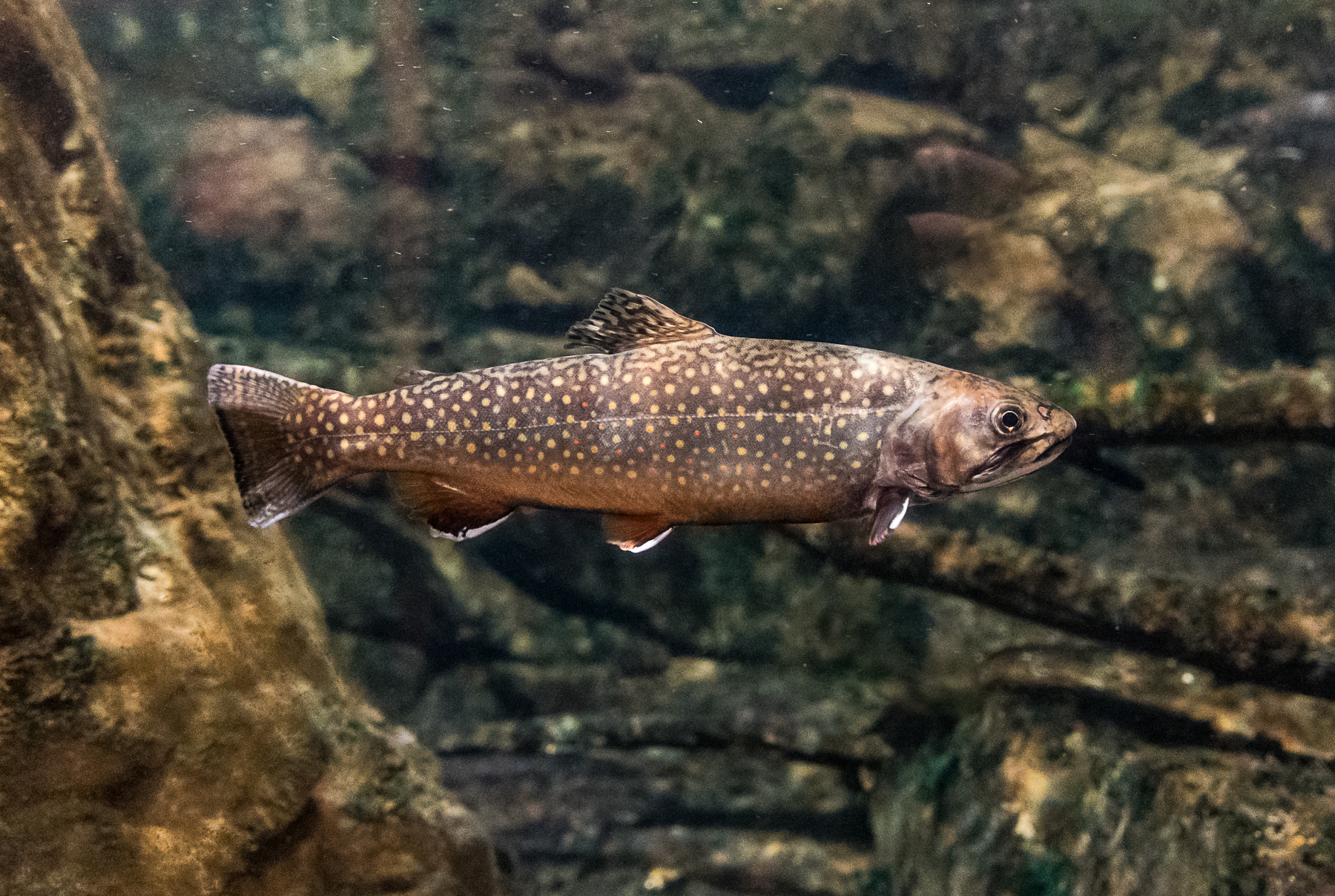

Other ponds have a limited amount of spawning habitat and produce fewer fish, but of a larger size.

For example, some ponds have an abundance of spawning habitat and the population may be very robust, but the fishery is dominated by smaller fish. Length and bag limits may vary based on the characteristics of the wild brook trout populations. Many of these waters have never been stocked. Of course, Maine is also home to a vast number of self-sustaining brook trout lakes, ponds, rivers, and streams. Many of these waters are small remote trout ponds that are stocked by plane. Some will survive to older ages and create quality fishing opportunities. In these waters, brook trout are stocked at smaller sizes, then they grow for a year or more to be legal size. These waters have good water quality and limited competition but usually lack suitable spawning habitat, so the life cycle of brook trout cannot be completed without supplemental stocking. Put, Grow, and Take fisheries are more common in the northern areas of the State. These types of fisheries are common in areas where the habitat is not adequate to provide year-round survival, or competition from other species is limiting. Put and Take fisheries are created solely by stocking fish of a legal size to provide instant fishing opportunities. Management: There are two primary management strategies for stocking brook trout in Maine: Put and Take and Put, Grow, and Take. We have even seen them inhabiting roadside ditches. In northern Maine, brook trout can be found in just about any stream with a source of cold water. However, they are incredibly resilient in their undisturbed habitats. Interesting Facts: Brook trout have been eliminated from much of their native range because they are very sensitive to illegal introductions, especially warmwater species like bass and perch.

Try using minnows, worms, or copper jigs. During winter months, you'll generally find them close to shore in water depths of 4 to 12 feet. You can catch them using a variety of methods including spin casting, fly fishing, trolling, or casting using small streamer flies, nymphs, copper lures, or worms.īrook trout are fun to catch ice fishing as well. In the spring and fall, brook trout can be caught near shore or on the surface using small dry flies, streamers, copper lures, and worms.ĭuring the summer months, you're more likely to find them in depths of 10 to 35 feet. They thrive in clear, clean, well-oxygenated waters, and their populations are heavily influenced by their environment. Brook trout can be distinguished from other members of the trout family by the dark, wavy, worm-like line on their back and the white leading edges of their fins, including the tail.ĭiet: They're opportunistic feeders, happy to eat aquatic insects or smaller fish.įishing Tips: Brook trout (also known as squaretails) prefer cold water between 50 and 65 degrees. Identification: Color is variable, depending on habitat. Some high elevation trout populations mature and reproduce at lengths smaller than 6 inches. Stream populations are typically slower growing than lake populations. However, same age trout from different lakes range from 7.5 to 17.5 inches in length. The statewide average length of 3 year-old brook trout in Maine lakes is 13.3 inches. Other Names: Squaretail, Brookie, Speckled TroutĪdult Size: Size varies greatly, depending on water temperature, productivity, and food sources.


 0 kommentar(er)
0 kommentar(er)
